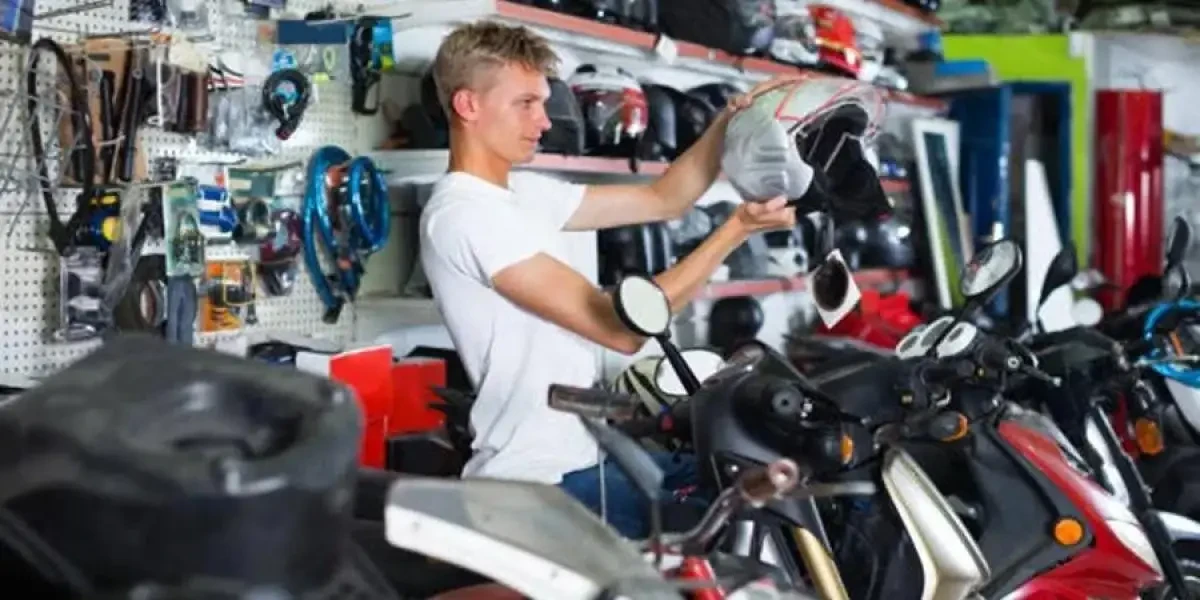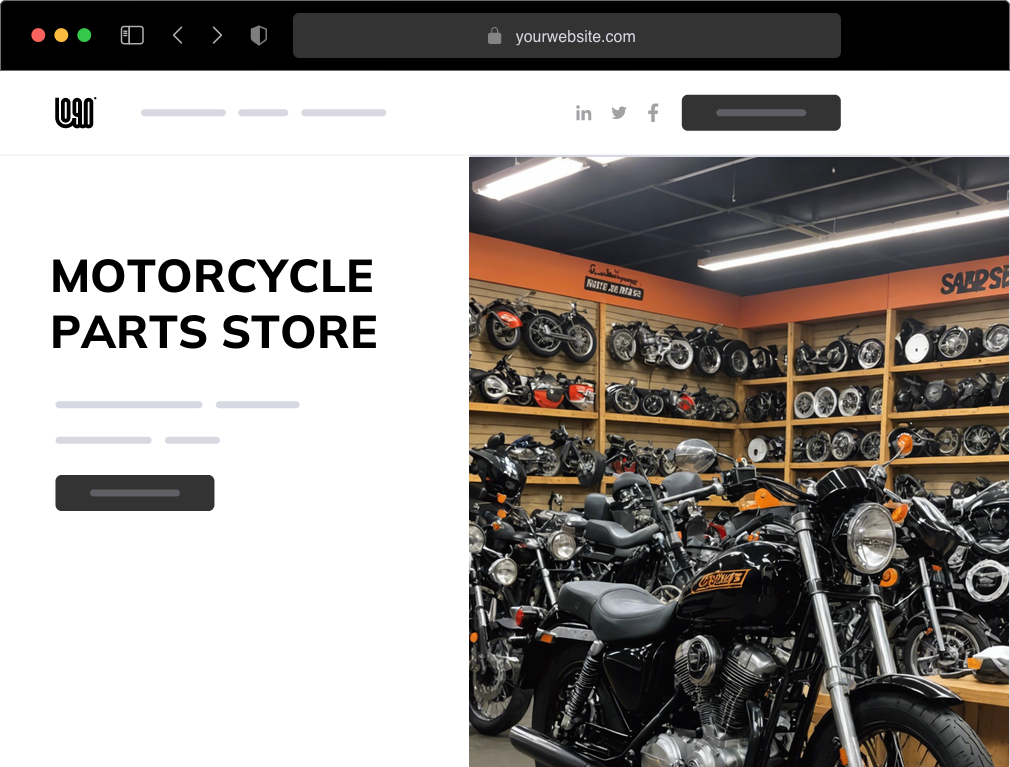Shop the most effective MX Parts NZ for Your High-Performance Bike
Shop the most effective MX Parts NZ for Your High-Performance Bike
Blog Article
Recognizing the Vital Parts of a Bike: A Comprehensive Guide for Lovers
For bike enthusiasts seeking to raise their riding experience and guarantee their bikes run efficiently, recognizing the vital elements of a motorcycle is vital. Each component, from the engine's intricate workings to the essential duty of the stopping systems, not just affects efficiency but also security and comfort. This overview will certainly go through the essential parts that every biker must recognize with, allowing educated options in both maintenance and prospective upgrades. As we start this exploration, one must ask: exactly how does each part communicate to create the seamless adventure every lover seeks?
Engine Parts

The camshaft plays an important function in regulating the timing of the engine's shutoffs, making sure the specific opening and closing required for effective gas and air intake, in addition to exhaust expulsion. This timing is critical to preserving optimum engine performance and effectiveness. Additionally, the carburetor or fuel injection system, depending upon the bike design, is accountable for mixing air with gas in the correct ratio for combustion.
The cooling system, either air or liquid-based, works to maintain the engine's temperature within operational restrictions, preventing getting too hot and making certain durability - motox parts nz. Each element, meticulously designed and incorporated, adds to the seamless procedure of the engine, specifying the motorcycle's power result and total performance
Transmission System
Essential to the motorcycle's performance, the transmission system guarantees reliable power transfer from the engine to the wheels. This system comprises a number of important elements, consisting of the clutch, gearbox, and final drive, each playing a vital duty in converting the engine's power into activity. The clutch, generally operated by a hand lever, offers to disengage the engine and involve from the transmission, enabling smooth equipment changes and controlled velocity.
The transmission, typically described as the transmission proper, contains a set of gears that bikers can by hand shift with to readjust the bike's rate and torque output. These gears are arranged in a series that makes it possible for the motorbike to increase efficiently and maintain ideal engine performance throughout numerous speeds. Many bikes utilize a sequential transmission, needing the motorcyclist to shift gears in a fixed order.
Braking Mechanisms
While recognizing the transmission system is vital to utilizing a motorcycle's power, equally crucial is the ability to regulate and quit that power successfully, which is where stopping systems come right into play. Brakes are essential for safety and security and efficiency, providing the rider with the required control to browse different surfaces and problems. Commonly, bikes feature two motorbike grips kinds of braking systems: disc brakes and drum brakes.
Disc brakes are a lot more common in modern motorbikes due to their remarkable efficiency. This system offers better heat dissipation, constant performance, and improved stopping power, particularly in damp conditions.
On the other hand, drum brakes, though much less typical, are still located in some bikes. They function by pressing brake shoes versus the inner surface of a drum connected to the wheel. While typically much less reliable in warmth dissipation and quiting power, drum brakes are simpler and more affordable.
Comprehending these braking systems' nuances allows motorcyclists to keep their bikes correctly and appreciate the engineering that guarantees reliable and risk-free stopping.
Suspension and Steering
Suspension and guiding systems are important parts that considerably influence a motorcycle's handling and experience comfort. The shock absorber, containing forks at the front and shock absorbers at the rear, takes in road abnormalities, enhancing security and control. Front forks, commonly telescopic or upside down, compress and rebound to mitigate impacts, while back shock absorbers keep tire contact with the roadway, crucial for grip and security.
Guiding, focused around the handlebars, connects the rider to the motorcycle's directional control. Get More Information The guiding head bearings make certain smooth procedure, allowing precise maneuverability. Correct alignment and maintenance of these bearings are essential for foreseeable guiding reaction and decreasing biker fatigue.
The suspension's adjustability is an additional important aspect; preload, damping, and rebound settings enable modification to match various riding styles and try this web-site conditions. This flexibility is important for optimizing efficiency, whether browsing city roads or taking on tough tracks. Innovations like electronic suspension systems supply real-time adjustments, enhancing trip high quality across diverse surfaces.

Electrical Equipments
After ensuring a smooth and controlled adventure via reliable suspension and guiding systems, attention turns to the electric systems, a pivotal aspect of modern bikes. These systems play an essential role not only in starting the engine but additionally in powering different parts that boost the functionality and security of the motorbike.
At the heart of a motorbike's electrical system is the battery, which stores electrical power needed for starting the engine and powering supporting systems - mx parts nz. The generator or generator, paired with the rectifier-regulator, ensures the battery remains billed while the bike is in procedure, converting power right into electric energy and keeping voltage degrees
The ignition system, another crucial element, is accountable for sparking the air-fuel mix in the engine's cylinders. Modern bikes frequently use an electronic ignition system, using higher effectiveness and reliability contrasted to conventional systems.
Lights systems, consisting of fronts lights, tail lights, and indicators, are additionally essential, ensuring presence and safety and security for the rider. Extra electronic elements such as sensors, control systems, and displays add to sophisticated attributes like gas shot management, anti-lock stopping systems (ABDOMINAL), and electronic dashboards, further improving the riding experience.
Conclusion
A complete comprehension of a bike's necessary parts, consisting of the engine, transmission system, stopping systems, suspension, steering, and electric systems, is essential for enthusiasts intending to maximize efficiency, safety and security, and convenience. Proficiency of these elements permits informed decisions pertaining to upkeep and upgrades, ultimately enhancing the riding experience. By integrating this expertise, cyclists can guarantee their motorcycles run at peak performance and integrity, consequently maximizing both pleasure and long life of their cars.
For bike lovers looking to boost their riding experience and guarantee their bikes run efficiently, comprehending the crucial parts of a motorcycle is extremely important.Important to the bike's capability, the transmission system makes sure reliable power transfer from the engine to the wheels.While understanding the transmission system is crucial to using a bike's power, equally crucial is the capability to regulate and quit that power effectively, which is where braking mechanisms come into play. Normally, motorcycles feature 2 types of braking systems: disc brakes and drum brakes.
A detailed understanding of a motorcycle's important elements, including the engine, transmission system, braking systems, suspension, steering, and electric systems, is vital for fanatics aiming to enhance security, performance, and comfort.
Report this page